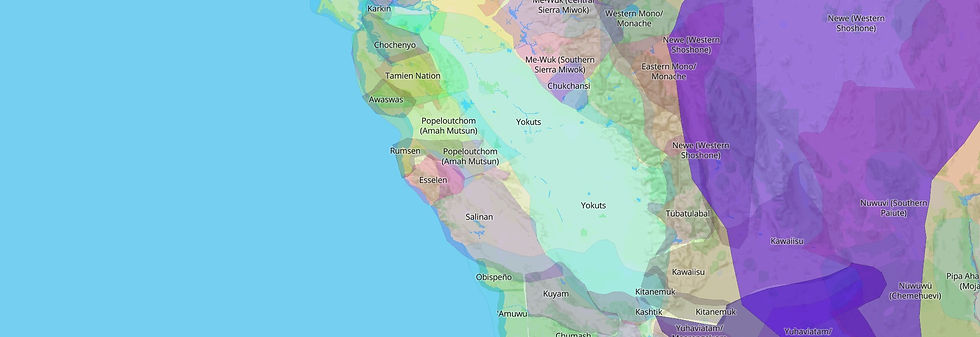
Acknowledging a
California’s Central Coast is an abundant place, flush with biodiversity and a vibrant human community. Over millennia, this socio-ecological richness was cultivated in part by the human hand, producing a dazzling array of heterogeneity and vegetative texture, sown by intention, and facilitated by the stability of climatic conditions. And yet, the complexity of our environments are increasingly under pressure; the stability of our climate wavering, and the threads tying together community loosening their stitch. With the erasure of thousands of Indigenous people, be it through callous indifference or outright genocide, vast knowledge and cultural wealth has been eviscerated on the Central Coast. The cascading effects of these atrocities remain stained on a landscape yearning for revitalization and renewed leadership from voices silenced in our past.
The C3JV works to advance conservation efforts within six habitat systems that each have unique assemblages of species, pressures acting on them, and people engaged in their stewardship. Key avian focal species are then used as indicators to help the Joint Venture monitor and assess our conservation impact over time within each habitat system. Our six conservation targets include: 1) Oaks and Prairies; 2) Scrub and Chaparral; 3) Riparian and Freshwater Wetlands; 4) Conifer and Mixed Hardwoods; 5) Urban and Intensive Agriculture, and 6) Coastal and Marine Systems.
and
The concept of the ecological engineer is perhaps useful in understanding the role humans have played, and continue to play, in shaping the habitats of the Central Coast. Our conservation targets are interwoven with human wellbeing goals not only in recognizing our obligation to improving the human condition, but also in the acknowledgment that healthy social and ecological systems are inextricably linked. The C3JV is advancing three core Human Wellbeing Domains, or priorities, that steer our work, including within project objectives, grant proposals and outreach initiatives, all guided by an embrace of human wellbeing at the center of ecological health.
ESSENTIAL
ELEMENTS.
Collaborative Conservation, which is to say conservation by working together for collective solutions, requires a set of core principles, values and attributes that enable synergistic outcomes. The C3JV and partners see these most essential elements as ingredients that foster the leavening of a successful Joint Venture, and ultimately, the enabling of a vision of the Central Coast where people and wildlife thrive.
Plan
Monitor
Engage
Planning is rightfully the starting point of most conservation efforts, but given the complex and urgent pressures we aim to tackle, how can we approach this fundamental need in a way that best achieves our goals? The C3JV has embraced the Conservation Standards approach, which is an ever-evolving method designed to systematically build learning into a living plan that is nimble to failures, unforeseen challenges, and diverse goals. Our forthcoming C3JV Implementation Plan will be the first rendition of a Standards approach, ready to be shared, tested and improved.
Joint Ventures are tasked with stewarding migratory birds and the habitats on which they depend. This most fundamental task requires a robust monitoring network to track trends over time, measure success and failure, adapt our approaches, and re-evaluate priorities. The C3JV is committed to working with partners to build upon existing monitoring efforts (ie. MAPS Stations), integrate new technologies (ie. MOTUS), and foster opportunities for undergraduate and graduate research with on-the-ground, applied projects that inform C3JV conservation actions while training the next generation of stewards.
Successful collaboratives are built of diverse, cross-jurisdictional representatives that reflect the complex issues being tackled. Through inclusive engagement that extends beyond traditional actors, new synergies may be waiting, paradigms can shift, and conservation efforts may lurch forward. The C3JV is eager to explore novel partnerships, and seeks to strengthen our capacity to engage with new audiences.
Protect, Restore, Enhance
Perhaps the bread and butter of conservation, the C3JV is eager to support, spearhead, champion, cheerlead, and celebrate efforts that protect key land and seascapes, restore degraded ecosystems, and enhance the functioning of habitats for birds, other wildlife and people. Our goal is to strengthen the synergistic efforts happening across the Central Coast as we repair and recover habitats and ecosystems that support the richness of life definitive of the place we call home.
Multiple-benefit
While the C3JV might view landscapes through a 'bird lens', advancing the recovery of migratory birds within the Central Coast and across the Pacific Flyway, the principle of multiple-benefit conservation is a guiding tenant of our approach, both in terms of beyond avifauna and across taxa, but also in the recognition of the socio-ecological linkages inherent to our human and non-human communities. While win-win approaches can be challenging to achieve, the C3JV seeks to engage in efforts that "simultaneously benefit local communities of people, enhance ecological function, and improve habitat quality for fish and wildlife."
Scale
The recovery of birds experiencing long-term declines, the revitalization of anadromous fishes responsible for the health of our watersheds, the reconciliation of past harms between Indigenous and non-indigenous peoples; the solutions will be made at scale, across political constructs, and beyond the fence. The C3JV seeks to maintain a vision of the forest between the trees, advancing conservation a the landscape scale, while acknowledging each tree holds a story, each river-mile a step closer to the headwaters, each acre under Indigenous stewardship an embrace towards reconciliation.










